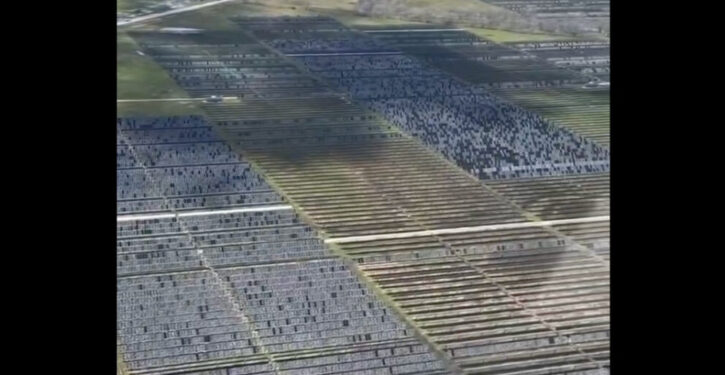
By Ilan Hulkower
A severe Texan hail storm damaged thousands of solar panels at a Fort Bend County farm causing neighbors to fear potential chemical leakage from the panels, ABC 13 reported.
The freak and severe hail storm hit the farm and its environs on March 16, causing massive property damage throughout the affected area, the outlet reported.
“The hailstorm we experienced Saturday morning was unimaginable,” Nick Kaminski, a Ford Bend County resident, told the outlet. “We’ve never seen anything like it in our lifetime.” Kaminski’s own house suffered damage from the wind, causing the roof to come off, which was followed by hail, ABC 13 reported. (RELATED: Chinese Solar Companies Are Gearing Up To Cash In On Biden’s Signature Climate Bill)
Kaminski also expressed concern over the damage to a nearby solar farm to the outlet. “They look like somebody took a shotgun and blasted it into the air and let the pellets fall down and shatter holes all in them,” Kaminski said about the condition of the farm and its solar panels, ABC 13 reported.
A video displaying an aerial of the solar farm after the hail storm does appear to show widespread damage. It was tweeted out by Corey Thompson.
BREAKING: Hail storm in Damon texas on 3/24/24 destroys 1,000’s of acres of solar farms.
Who pays to fix this green energy? @StateFarm? @FarmBureau? @Allstate?
Or you the taxpayer? pic.twitter.com/GpNSaopObZ
— Corey Thompson (@Roughneck2real) March 25, 2024
Kaminski shared with ABC 13 that he was worried some of the chemicals in the solar panel might seep into the ground and the water, causing health problems. “That’s what we take a shower with, we drink with,” he told ABC 13. “It could be in our water now.”
The solar panels could be made of a chemical compound called cadmium telluride, a toxic substance that if in contact with a human could cause kidney, lung, gastrointestinal, heart and skin problems, according to the National Institute of Health (NIH)’s National Library of Medicine. The substance is listed as an “Irritant” and an “Environmental Hazard” by the NIH.


